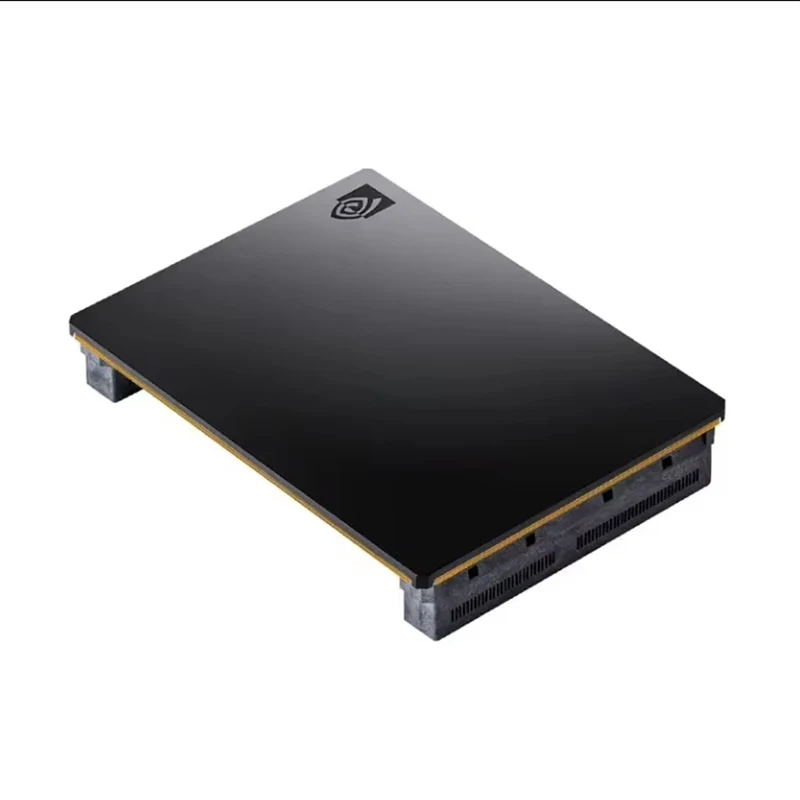The Application of GPU in Graphics Rendering
2025-06-26
In the world of modern computing, graphics rendering has evolved into one of the most important and demanding tasks. Graphics Processing Units (GPUs) play a central role in this evolution, transforming how visual content is generated and displayed. Unlike traditional CPUs (Central Processing Units) that are optimized for general-purpose tasks, GPUs are designed to handle parallel processing efficiently, making them ideal for graphics rendering, where many calculations must occur simultaneously. This essay explores the critical application of GPUs in graphics rendering, highlighting their architecture, advantages, and impact on various industries.
1. The Role of GPUs in Graphics Rendering
Graphics rendering is the process of generating visual content from a 3D model or scene. The goal is to create realistic, detailed images that appear on the screen. Historically, this process was done solely by the CPU, but as graphics technology advanced, it became clear that a dedicated processing unit was necessary to meet the growing demands for high-quality visuals in games, films, and virtual environments.
A GPU is specifically designed to process large volumes of data in parallel, which is essential for rendering high-resolution images and complex scenes. Unlike a CPU, which typically has a small number of powerful cores optimized for single-threaded performance, a GPU consists of hundreds or even thousands of smaller cores capable of handling multiple tasks at once. This makes GPUs particularly effective in graphics rendering, where multiple operations must be performed simultaneously on different pixels, textures, and geometric data.
2. Parallel Processing and Efficiency
One of the defining features of a GPU is its ability to execute parallel operations. In the context of graphics rendering, tasks such as calculating the color of each pixel, applying textures to 3D models, and determining the lighting in a scene must happen simultaneously across millions of pixels. The GPU’s architecture allows for these computations to be distributed across many cores, enabling significant speed improvements over CPU-based rendering.
For example, when rendering a high-resolution 3D game scene, the GPU can process the data for all the pixels in a frame simultaneously, while a CPU would need to process each pixel sequentially. This parallel processing capability allows for real-time rendering of complex 3D graphics, such as those found in modern video games, simulations, and VR environments.
3. Real-Time Rendering in Video Games and Interactive Media
One of the most visible applications of GPUs in graphics rendering is in the gaming industry. As games have evolved, the demand for more realistic and immersive graphics has grown exponentially. Real-time rendering, which refers to the ability to generate images at high speed (usually at 30-60 frames per second), is critical in providing a smooth and engaging experience for players.
GPUs enable real-time rendering by performing complex tasks such as:
Shader Calculations: Shaders are programs that define the appearance of surfaces, textures, and lighting in a scene. Modern GPUs can run thousands of shaders in parallel, allowing for the creation of highly detailed environments with dynamic lighting, reflections, and shadows.
Ray Tracing: Ray tracing simulates the way light interacts with objects in a scene to create photorealistic images. It is computationally expensive but is made feasible in real-time rendering thanks to the power of modern GPUs, which can handle millions of rays per frame.
Texture Mapping: GPUs handle the application of textures to 3D models, ensuring that surfaces in a scene appear realistic, from the roughness of rocks to the smoothness of water.
These tasks, when processed by the GPU, allow games and simulations to produce stunning graphics without sacrificing performance.

4. Rendering in Film and Animation
While real-time rendering is essential in interactive media like video games, the film and animation industry benefits from the power of GPUs in different ways. Render farms—large networks of GPUs—are used to generate the high-quality visuals required for animated films, special effects, and visualizations.
In film production, the GPU accelerates tasks such as:
Global Illumination: This technique simulates how light bounces off surfaces to create natural lighting effects in scenes. The GPU can calculate complex light interactions quickly, resulting in more lifelike images.
Particle Systems: Movies often use particle systems for effects like smoke, fire, or explosions. The GPU’s parallel processing capabilities make it possible to simulate and render millions of particles in real-time.
3D Model Rendering: GPUs can efficiently render complex 3D models with high detail, crucial for achieving photorealistic characters, landscapes, and environments.
With the help of GPUs, studios can produce visually impressive films in a fraction of the time it would take using CPUs alone, making them indispensable in modern animation and visual effects.
5. Applications Beyond Entertainment
While GPUs are most commonly associated with gaming and film, their use extends far beyond entertainment. Several industries have leveraged the power of GPUs for non-graphical computing tasks, such as:
Medical Imaging: GPUs are used to render 3D medical scans, such as CT and MRI scans, allowing doctors to visualize organs and tissues in detail. The parallel processing capabilities of GPUs accelerate the creation of detailed images from vast amounts of data.
Virtual Reality (VR) and Augmented Reality (AR): In VR and AR, GPUs are essential for rendering interactive 3D environments in real time. The smooth performance of these technologies relies heavily on the GPU's ability to render complex, immersive scenes at high frame rates.
Scientific Visualization: Researchers in fields like physics, biology, and engineering use GPUs to render simulations of complex systems, such as molecular structures, fluid dynamics, and weather patterns. The GPU's computational power accelerates these processes, enabling faster analysis and better insights.
6. The Future of GPU-Powered Graphics Rendering
The future of GPU-powered graphics rendering is bright, with continuous advancements in technology. As GPUs become more powerful, they are enabling new possibilities for realism in visual media. One promising area is AI-enhanced rendering, where machine learning algorithms can be used to predict and enhance the rendering process, making it faster and more efficient.
Additionally, the development of ray tracing hardware and hardware-accelerated AI models is opening new doors for ultra-realistic, interactive environments. With the rise of cloud gaming and edge computing, the demand for powerful GPUs that can handle graphics rendering remotely is also growing, bringing high-quality gaming experiences to devices that were previously unable to handle such tasks.
7. Conclusion
GPUs have revolutionized graphics rendering across industries, transforming the creation of visual content in entertainment, science, and medicine. Their ability to process large volumes of data in parallel makes them the ideal tool for tasks that require high-speed, high-quality image generation. Whether it’s enabling real-time rendering in video games or powering complex simulations in scientific research, GPUs continue to drive innovation in graphics and computing. As technology progresses, the role of GPUs in rendering will only become more integral, shaping the future of visual media and interactive experiences.


